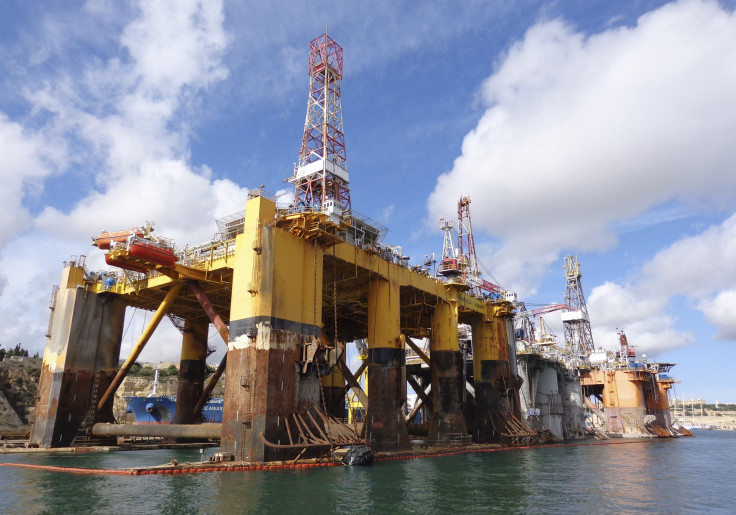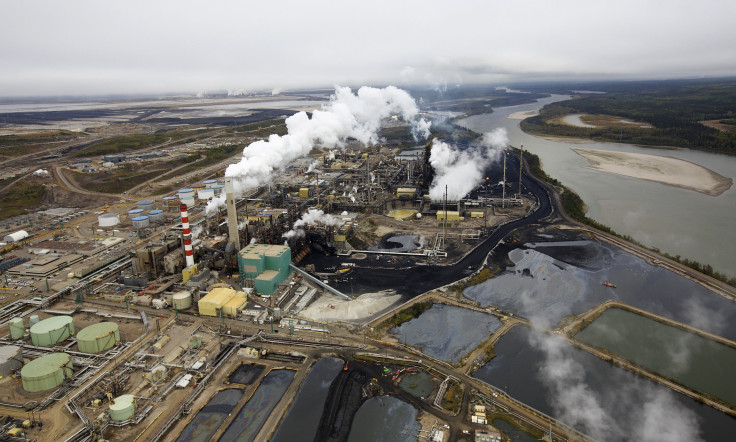Peak-Oil Predictions Didn’t Pan Out, But Concerns About Supply Persist As Conventional Crude Slides

At the outset of the global economic meltdown in 2008, the world was already bracing for another crisis: peak oil. Predictions that oil production would soon top out flooded the airwaves, stoking fears of a global oil shortfall and fueling speculation of prices at hundreds of dollars a barrel.
“People have been trying very hard and they can’t increase oil production from here,” Robert Hirsch, an energy analyst, said in a June 2008 segment on CNBC. He projected oil production would peak, and then decline sharply within three to five years. “For somebody to suggest that all of a sudden something magic is going to happen, and there’s going to all of a sudden be an enormous amount of new oil — they don’t understand the problem,” he added.
How times have changed. Eight years on, oil output has risen dramatically. Large leaps in oil field technologies, like horizontal drilling, and the U.S. hydraulic fracturing boom have unleashed more crude supply than analysts and oil industry experts anticipated during the height of peak oil predictions.
America’s domestic production has nearly doubled over that time, reaching 9.4 million barrels a day last year, the U.S. Energy Information Administration estimated. Total global oil production swelled by nearly 11 percent, rising from 86.5 million barrels a day in 2008 to nearly 96 million in 2015, according to the agency.
“Our community would concede that we underestimated or didn’t quite understand this whole fracking thing,” said Jan Lars Mueller, executive director of the Association for the Study of Peak Oil USA, a national network for scientists, researchers and energy observers. “It exceeded everyone’s expectations.”
Hirsch acknowledged his projections put him in “the ‘wrong’ column,” he said by phone with a laugh. “I thought we had pretty good information, so I stuck my neck out and said three to five years.”
Still, the peak oil naysayers hardly have reason to gloat. The supply of oil may be rising, but the nature of the fuel mix is changing quickly, adding greater uncertainty to the long-term outlook for the world’s largest energy source.
Pockets of cheap, easy-to-produce oil — called conventional crude — are gradually drying up after more than a century of exploration. Exxon Mobil, the world’s largest publicly traded oil and gas company, said it expects output from developed conventional oil fields to decline through 2040. Conventional crude output actually peaked in 2006, at 70 million barrels a day, and has since plateaued, the International Energy Agency said in its 2010 World Energy Outlook report.
The growth in oil supplies will largely come from harder-to-reach, more expensive reserves, including U.S. shale oil, Canadian oil sands crude and deep-water oil fields — a group that’s proved vulnerable to plunging oil prices and sweeping budget cuts in recent years. Exxon Mobil projected these unconventional supplies, together with natural gas liquids, will represent 40 percent of global petroleum liquid production by 2040, up from 25 percent in 2014.

“There is undoubtedly a lot of oil in the ground still,” said Mason Inman, who has written a biography of M. King Hubbert — the Shell Oil geologist who popularized the peak oil concept — due in April. But the higher-risk, less conventional barrels are "getting more and more expensive to extract," he added.
Oil producers need higher oil prices to offset the greater costs of extracting and refining unconventional crude. In Canada’s oil sands region, where tar-like crude is mined or melted out of the ground, many projects are unprofitable at prices of $65 to $75 a barrel. For many U.S. shale drillers, the breakeven point is around $50 to $60 a barrel. Ambitious Arctic oil drilling projects need oil prices at around $95 a barrel to cover the high costs of extracting crude in a frigid, dangerous environment.
When the price of oil surged past $100 a barrel, these unconventional projects gained appeal. But U.S. crude prices have plummeted around 70 percent since the mid-2014 peak of $105 a barrel, leaving many companies mired in debt and grappling with shrinking revenue. In response, drillers have laid off tens of thousands of workers and shelved development of new wells.
The U.S. oil rig count has dropped from a peak of 1,609 drilling rigs in October 2014 to 467 rigs last week, energy services firm Baker Hughes Inc. reported.
As existing wells run dry and new projects stall, U.S. crude production is projected to drop 7.4 percent this year from an average of 9.4 million barrels a day in 2015 to 8.7 million barrels in 2016. Output could slide further to 8.5 million barrels a day in 2017, the Energy Information Administration forecast.
Worldwide, oil companies delayed making decisions on 68 major projects in 2015, accounting for around 27 billion barrels of oil and equivalent natural gas spending. All told, the industry deferred spending $380 billion last year, energy consultancy Wood Mackenzie found in a January report.
Tim Hess, a petroleum analyst with the Energy Information Administration, said the delays in both shale drilling projects and longer-term, multibillion-dollar exploration projects make it difficult to project exactly how much oil the world will produce.
“How are changes in investment going to affect production in the very short term?” he asked. “Producer sensitivity to low prices is a major uncertainty.” The outlook for global demand is similarly murky, subject to the strength or weakness of emerging economies like China.
As a result, projections for oil prices are all over the map. The energy agency found the market’s expectations range from prices between $22 a barrel and $82 a barrel for December 2016, according to its statistical analysis at a 95 percent confidence interval.
“There’s just a high level of uncertainty,” Hess said.
Hirsch, the senior energy adviser at Management Information Services Inc., said he no longer thinks of the oil market’s trajectory as a mountainous peak with a swift decline. Instead, he sees a plateau.
“What’s more likely is that oil production will reach a maximum and flatten out,” he explained. “The production doesn’t increase for some period of time, and then production will begin to fall. And when production declines, then there will be shortages, and when people realize that there’s a problem, then panic will ensue.”
He said the “good oil” — the conventional crude and the easiest to extract and refine — will start declining “within a matter of years. It’s not decades.”
Mueller, who heads the peak oil network, said the plunge in oil prices is reinvigorating discussions within the community of engineers and analysts.
“Higher [oil] prices brought forth more supply. It’s the low price that’s highlighted that this stuff doesn’t come out of the ground by itself,” he said. “If there’s not infinite demand and the ability to pay for it, then supply won’t happen.”
© Copyright IBTimes 2025. All rights reserved.





















